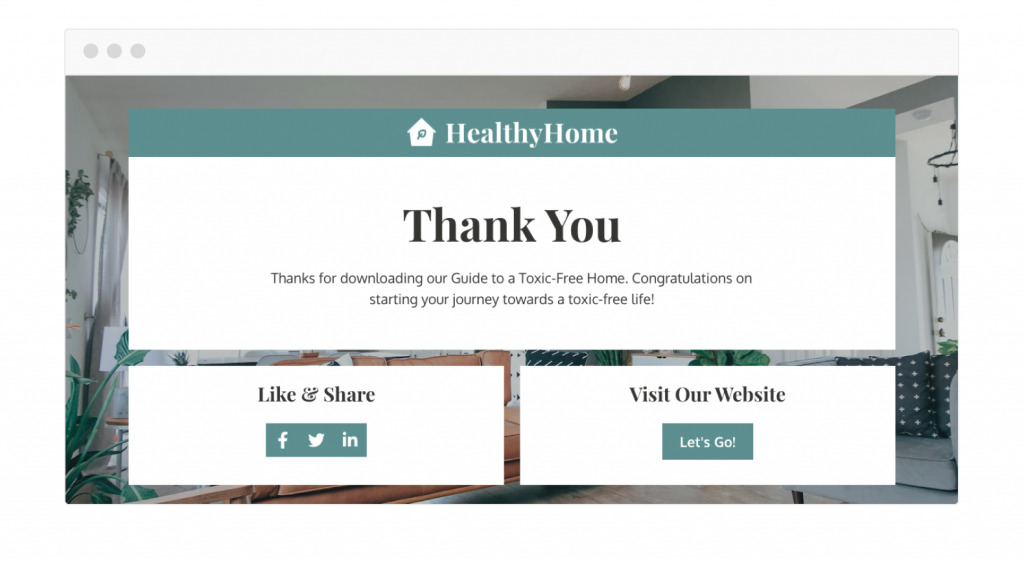An effective lead magnet is a valuable tool for any business owner. It’s how you capture the customer contact details you need to nurture new people into customers for your company. But lead magnets can only accomplish so much on their own. You still need a way to drive customers to your lead magnet, convince them to share their details, and earn their trust.
That’s where your lead magnet funnels come in. Similar to “funnels” you create to gradually nudge customers from one step to the next in their buyer journey, your lead magnet funnel leverages various strategies to help optimize the reach, impact, and conversion rates of your lead magnets.
So, how do you create a great lead magnet funnel?
Understanding Lead Magnets and Lead Magnet Funnels
As you may already know, a lead magnet is a valuable resource you offer customers in exchange for their contact details. It might be an eBook, created by repurposing previous blog posts, articles and webinars, access to an event, or a downloadable asset.
The purpose of your lead magnet is to convince potential customers to connect with you and become “leads” for your company. Once your customers share their contact details, you can nurture them into paying customers, through email marketing campaigns, and targeted promotions.
A lead magnet funnel, on the other hand, is the strategic pathway you use to turn potential customers into leads and convince them to access your lead magnet. Your funnel should accomplish a few things at once, including:
- Earning the trust of your target audience by showing authority and credibility.
- Convincing customers that you have something valuable to offer them.
- Increasing the micro-conversion rates for your lead magnet landing pages.
- Forming the foundation for a positive relationship with your target customer.
- Offering insights into which strategies boost lead generation and increase conversions.
How to Create High-Converting Lead Magnet Funnels
A lead magnet funnel can include various resources and channels, from social media and your website (to capture the attention of potential leads), to online and offline events, videos, podcasts, and more. Although your exact strategy for success might vary, the following best practices should ensure you end up with a more powerful lead generation strategy.
1. Identify the Lead Magnet Funnel Stages
The stages of a lead magnet funnel are pretty similar to the “funnels” used in any marketing or sales strategy. Identifying them in advance will help you determine what kind of content you need to produce to guide customers through their journey:
- Stage 1: Awareness: The awareness or discovery stage is when customers are learning about your brand, products, and services for the first time. To draw attention to your lead magnets (and your company), you can experiment with various strategies, such as search-engine-optimized blog posts, social media posts (paid and organic), and even podcasts.
- Stage 2: Interest: Once you have your customer’s attention, you need to maintain their interest in your brand and show you can deliver value. Thought leadership articles, unique content, and educational videos can help with this.
- Stage 3: Consideration: During the consideration stage, your focus should be on convincing customers that accessing your lead magnet and connecting with your company is worthwhile. Social proof (reviews and testimonials), and landing pages that draw attention to the benefits of your lead magnet and company are beneficial.
- Stage 4: Decision: In the decision or conversion stage, you want to convince customers to actually access your lead magnet. Techniques that leverage FOMO (such as countdown timers or limited-time deals), can help. Reminding your customers that accessing your lead magnet is free, and easy, is also a good strategy.
- Stage 5: Nurturing: Once your customer accesses your lead magnet, you want them to stay connected to your brand. This is when you use your email or SMS strategy to nurture leads with engaging content, unique deals, and exclusive resources.
2. Develop a Targeting Strategy
Once you understand the stages of your lead magnet funnel, the next step is figuring out how you’re going to target and engage potential leads. Since you won’t have your customer’s contact details (yet), you’ll need to rely on other strategies to find leads. This could mean publishing a podcast or video campaign on channels like YouTube, using social media, or using SEO content on your website.
Here’s an example of how HubSpot drives leads to lead magnets like its industry reports:
https://www.facebook.com/share/p/LEk5xnVJLdifeXse
Whichever strategy you use, your focus should be on raising brand awareness and earning customer trust, rather than just selling products. Think about the specific audience you want to reach, by looking at the ideal behaviour, demographics, and interests of your target customers.
Use these insights to create content that answers common customer questions, shows your thought leadership related to specific industry-relevant topics, and demonstrates your credibility.
If your website, social media pages, and other online channels are filled with valuable content, customers are more likely to believe that your lead magnet (and company) will be beneficial to them. You can even expand your reach by working with influencers and other well-known figures in your industry to co-create content that boosts brand awareness.
3. Create a Compelling Lead Magnet
It almost goes without saying, but a great lead magnet funnel needs a strong lead magnet. No-one is going to give you their contact details for access to a whitepaper or eBook that includes content they can find elsewhere, or directly on your website. While you can repurpose content for a lead magnet, you should also be offering something unique and exclusive.
To boost your chances of designing a successful lead magnet that grows your email list:
- Research your audience: Collect as much data as you can about your target audience, their goals, and their pain points. Read customer reviews on competitor websites, speak to your sales team to ask about common questions customers have. Run focus groups to gather direct feedback, or read industry reports.
- Make it unique: Your lead magnet should offer something users can’t find anywhere else. This could be proprietary data gathered from your own research, exclusive video content, podcast episodes, or just a unique set of opinions.
- Ensure it aligns with your offering: For a lead magnet to help convert leads into paying customers, it needs to be aligned with whatever you’re offering. If you sell marketing software, for instance, your lead magnet might be an exclusive webinar covering the latest trends in the marketing industry.
Don’t be afraid to experiment with formats too. Text-based lead magnets, such as whitepapers and eBooks are extremely popular, particularly in the B2B market. But you might find that your customers get more value from a visual resource, like a video, webinar, or infographic.
4. Create an Incredible Landing Page and Thank-You Page
A lot of business leaders invest significant effort into creating a great lead magnet, such as an exclusive podcast episode, video or webinar, then forget to prioritize the “landing page” and “thank you” page. These two pages play an important role in your lead magnet funnel.
Your landing page is where you’ll engage with potential customers during the consideration and decision stage. It should be packed with information that convinces customers to convert, from data and feedback from existing customers, to insights into the specific benefits of your magnet.
Make sure you’re pushing as many people to your landing page as possible, with social media campaigns, paid social and Google ads, and links from any other marketing channels you use.
The thank-you page, while commonly overlooked, is crucial for ensuring people actually engage with your lead magnet, and continue to interact with your brand. It should offer instant access to whatever free asset you’re offering (unless you need to send this by email). It should also encourage customers to connect with your business elsewhere, with links to social media, or your blog.

5. Design a Powerful Email Sequence
Once you’ve convinced your customers to share their contact details with you in exchange for a great lead magnet, it’s time to start nurturing them. The first email in most lead magnet funnel email campaigns will be the “welcome” email, that introduces your brand, provides access to your free resource, and sets expectations with customers.
Use email marketing automation tools to ensure this message is delivered immediately to your customer as soon as they fill out the form on your opt-in page.
Then, create a comprehensive nurturing campaign, with a series of emails that introduce your products and services, highlight your credibility with reviews and testimonials, provide access to exclusive discounts, and keep the conversation going.
Boost your chances of success by ensuring your emails are:
- Personalized: Segment your contacts based on the lead magnet they access (if you offer multiple), their location, and any other relevant data you might have. This will help you nurture customers with more relevant messages.
- Branded: Include consistent branding in all of your emails. Showcase your logo, use the same colour palette, and work with a VA to make sure your business name stands out. Remember to include links to your website and social media pages.
- User-friendly: Don’t make the mistake of sending emails that deliver a poor user experience. Remember, you’re focusing on building relationships with your target audience. Make your emails easy to read and navigate on any device.
6. Constantly Analyze and Optimize your Funnel
Finally, once you’ve created your lead magnet funnel, and you’re successfully attracting leads to your email list, don’t assume the work is over. A great funnel can provide valuable insights into your target audience, helping you to identify which assets they want to access, what they expect from your business and more. With that in mind, use analytics to your advantage.
Keep track of the traffic and engagement rates on your landing pages, and pay attention to which channels drive the most leads to your business. Find out which magnets drive the most engagement, and have a positive impact on your brand reputation.
Experiment with different methodologies, using A/B testing to try out different email nurturing campaigns, landing page designs, and marketing channels. It’s also worth directly collecting feedback from your target audience, and any reviews or testimonials they share.
This will give you the data you need to boost the ROI of your funnel in the future.
Build Better Lead Magnet Funnels
Lead magnets are incredible resources for business leaders who want to access new customers, expand their reach, and boost conversions. However, just like anything your business offers, you need to ensure your customers can find and engage with your lead magnet.
Developing a strong lead magnet funnel with the steps above should ensure you end up with more high-value customers to add to your contact list.
If you need extra help growing your email list, and converting your leads, download my free lead generation guide, or email me at info@lunevalleyva.co.uk.



